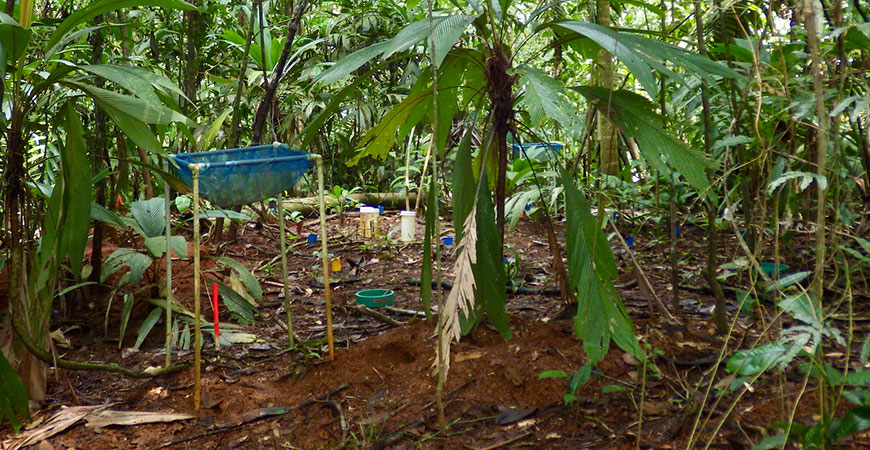
It is said that rainforests are the Earth’s lungs, capturing carbon dioxide from the atmosphere, building it into lush vegetation and releasing oxygen and water back into the air.
But every time there’s a big rain, the rainforest soil emits a significant burst of that CO2, according to a new study by UC Merced Professor Tom Harmon, director of the Sierra Nevada Research Institute, and postdoctoral researcher and UC Merced alum Angel S. Fernandez-Bou.
What they found suggests CO2 in rainforest soil will increase as the climate warms, and precipitation patterns will become more important in defining the intensity of these emission bursts.
“There’s a lot of carbon in the soil, being broken down to CO2 and released at the ground surface all the time, more or less steadily,” Harmon explained. “But thanks to some excellent instrumentation, we were able to observe the soil for a long time, through many wet and dry periods.” He, Fernandez-Bou, and other colleagues placed sensors in rainforest soil in Costa Rica and spent 2 ½ years collecting data on the soil-carbon dynamics.
The results surprised them.
“The soils have amazingly high levels of CO2,” said Harmon, with the Department of Civil and Environmental Engineering in the School of Engineering. “The forest also sees jaw-droppingly hard rain events and, when they occur, we observed ‘burps’ of CO2 emissions out of the soils. Events like these that happen quickly and are challenging to observe and are known as ‘hot moments’ in earth systems science. I was not expecting those burps.
“Then the soil clogs with water, temporarily blocking CO2 emissions and resulting in even higher CO2 levels. After the rainfall, the soil drains quite quickly, and the CO2 emissions go back to normal until the next rain.”

The rainforest acts like a sponge that soaks in CO2 in its plants and soils, playing a key role in helping to moderate the CO2 emitted by fossil fuel emissions. Over the past 150 years, people have pushed an enormous amount of CO2 into the atmosphere by burning fossil fuels including coal and oil, driving global climate change.
The problem is that the amount of rainforest is decreasing. Parts of the Amazon and other important rainforests are being taken away for agriculture and other development or lost to wildfire.
Global Change Biology published the outcomes of this project, which began when Fernandez-Bou, now a postdoctoral researcher at UC Merced, was an Environmental Systems Ph.D. student in Harmon’s lab. The project was funded by the National Science Foundation and fellowships from the UC Merced Graduate Division.
The researchers installed sophisticated soil-sensing equipment, and Fernandez-Bou fabricated a new, low-cost instrument to measure the burps from the soil, because commercial devices could not precisely measure CO2 under such conditions. The data they collected showed that the soil was more responsive to rain than any other weather events, and that allowed them to adapt a soil-climate computer model to simulate long-term warming scenarios in the rainforest.
What they found suggests that rainforest soil CO2 will increase under warming climate, and precipitation patterns will become more important in defining the intensity of the hot moments of CO2 emissions.
“There is a balance, but warming is enhancing the cycle,” Fernandez-Bou said. “This means increased activity and more forest respiration, but it also means more CO2 uptake. We need to stabilize climate change before that balance breaks.”



